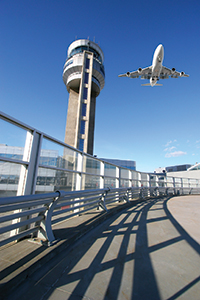
Features
Safety
At The Gate: Implementing the One Sky approach
The world’s airlines carry more than 1.6 billion passengers annually and experts predict this figure will double in the next 15 to 20 years, with freight traffic growing even more quickly. However, current air navigation services procedures and infrastructure cannot effectively handle this growth.
November 3, 2011 By Brian Dunn

|
|
The world’s airlines carry more than 1.6 billion passengers annually and experts predict this figure will double in the next 15 to 20 years, with freight traffic growing even more quickly. However, current air navigation services procedures and infrastructure cannot effectively handle this growth. That’s why the air transport industry is expected to invest more than $120 billion on new technologies and systems worldwide over the next 10 years to move towards the One Sky vision. This is the industry’s vision of a future global air navigation system that offers enhanced safety and efficiency while accommodating worldwide air traffic growth in an airspace that is seamless and devoid of national borders.
To prepare to meet this growth, the International Civil Aviation Organization (ICAO) held a Global Air Navigation industry symposium at its Montreal headquarters in late September. The symposium provided a platform for global and regional industry partners to share their latest developments, thus identifying commonalities and differences between the systems to ensure interoperability, to facilitate the harmonization of air navigation systems and to chart out the next step. It also paves the way for the 12th ICAO Air Navigation Conference in November, 2012.
In a session entitled Tomorrow’s System: Justifying Spending and Financial Possibilities, a case was made that airlines are not making the necessary investments to solve the NextGen “Equipage Paradox.” That is according to Russell Chew, managing partner at Nexa Capital Partners, a Washington, D.C.-based provider of financial advice and capital investments to the aerospace industry.
The Equipage Fund consists of $1.5 billion in public-private sector financing to help the airline industry adopt the avionics technologies needed to make the NextGen a reality.
“Many airline balance sheets remain weakened since 2001, making the cost of discretionary, non-aircraft capital expensive and protecting cash flow remains a top priority. This handicaps their ability to close their business cases for long-term, non-aircraft capital investments, such as new avionics equipage,” Chew argues.
But public-private partnerships such as the NextGen Equipage Fund can solve this “paradox” through proven regulatory and policy mechanisms, in combination with private sector capital, commercial financing structures and service contract commitments, Chew adds.
And without aircraft equipage, NextGen air traffic management (ATM) systems cannot produce operational benefits. The largest benefit of NextGen is the reduction in operating costs associated with delays in congested enroute airspace, which in turn cause delays from air traffic controller workload saturation, Chew adds.
Major improvements in the current air navigation system are long overdue to enhance operational performance and capacity, efficiency, safety, and environmental performance, says Cyriel Kronenburg, assistant director, airport and ATC charges with the International Air Transport Association (IATA).
And to make it happen, users need timely and co-ordinated implementation of major programs such as NextGen in the U.S. and SESAR (Single European Sky ATM Research), he adds. But with those initiatives budgeted in the billions of dollars, “no such investments can be expected without sustainable funding and deliverable benefits and targets,” suggests Kronenburg.
In addition, although fleet equipage is essential to achieve the desired benefits, the “lack” of equipage is often used as a reason for the status quo. And, like Chew, Kronenburg notes that “in an environment where ‘cash is king,’ airlines require a clear business case,” to make equipage happen.
But the economic benefits of the global aviation/air navigation system infrastructure go beyond commercial aviation alone by generating new jobs, contributing to the global gross domestic product and providing substantial tax revenue, notes Kronenburg.
“Yet commercial aviation users are often the only significant contributor to the system. States should see investments in infrastructure as investments in their economy . . . as an engine for economic growth.”
The IATA would like to see funding for future system enhancements from both public and private sources.